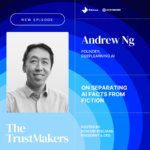With more businesses relying on AI and personalized marketing, the need for accurate data has never been more critical. Inaccurate data—often referred to as “dirty data”—can lead to flawed assumptions, wasted budgets, and lost customer trust.
At this year’s AWEurope event, Advertising Week hosted a roundtable in collaboration with Convertr, a platform that automates data validation for large enterprises. Thirteen industry leaders from a variety of B2Bs and publishing companies joined the conversation to provide their insight on data cleanliness. Together, they explored the implications of dirty data, and how organizations can maintain clean, actionable datasets.
What Is Dirty Data—and Why Does It Matter?
Dirty data includes anything from minor typos to entirely false information. The conversation started by addressing just how important data quality is for modern organizations.
There was consensus: regardless of how bad data is assessed, it must be removed quickly. Left unchecked, it results in reduced productivity, regulatory risks, and lost performance. One sobering stat: clients reportedly spend 30% of their time just trying to interpret unclear data—translating directly to lost profits.
Data Ownership and Organizational Challenges
Izzie Rivers, CEO of Realm B2B, pointed out how fragmented data ownership can cripple efforts to improve quality.
“First you have to find the people responsible for the data, and often no one even knows a platform was purchased,” she said. “Then, even if you find the data, teams don’t have the permission to clean or transform it.”
This often forces marketers into messy workarounds—layering fixes on top of bad systems instead of solving the root problem.
Targeting the Right Audience Starts with Clean Data
Data isn’t just about collection—it’s about use. The group agreed that targeting the right audience is critical. If your data is wrong, your messaging won’t reach the right people, no matter how clever your campaign.
They also explored the tension between being discoverable and becoming annoying.
“The more quality the data, the more personal it becomes,” Rivers explained. “Brands need to balance direct outreach with more passive visibility to build real relationships.”
Personalization, Privacy, and the Fine Line Between Helpful and Creepy
As personalization improves, so does the risk of overstepping. Many of the discussion participants warned that customers are becoming savvy to marketing tactics—and are more likely to unsubscribe if they feel intruded upon.
Some even touched on how hyper-personalized content can lead to dangerous information silos.
Mary Keane-Dawson of the British Interactive Media Association warned:
“There’s a serious issue with how AI enables personal tone in misinformation. It erodes independent publishing and fosters extremism.”
Cleaning What You Have Before Adding More
Other attendees agreed: don’t buy new data sets if your current data is a mess. Focus on cleaning and maintaining what you already have.
Emma Bowkett, CEO of Convertr, emphasized, “Until you fix what’s already in your infrastructure, new data is nearly useless.”
The outdated methods of outreach like email or cold calls are also losing effectiveness. And demographics alone are no longer sufficient—behavioral insight is becoming more valuable.
Consumers Know Their Value—Even If They Don’t Act Like It
Ironically, while consumers claim not to value their own data, they’re still handing it out—sometimes falsely. Rivers even noted how data breaches have made her feel like her information is already out there.
This brings forward an idea: incentivizing users to manage their data truthfully. Rewarding consumers for responsible data-sharing could drive more accurate and useful insights.
Where Does the Problem Start? Transparency and Trust
Bowkett asked the group to consider where the transparency breakdown begins.
“We look at where the data originates and whether it converts,” she said. “Some players are much less transparent than others, and that’s a real concern.”
With the rise of AI, clean data isn’t optional—it’s essential.
AI: Friend or Foe to Clean Data?
The discussion turned to AI’s expanding role. One stat stood out: 46% of B2B buyers now refer to AI tools in their research, compared to just 17% still using traditional formats like whitepapers.
Despite AI’s promise, many marketers still focus on Google optimization, unaware of how AI is reshaping the landscape. If content isn’t optimized for AI consumption, marketers risk being left behind.
Yet, some panelists noted a potential return to fundamentals—where branding, not just lead-gen, takes the spotlight.
Conclusion: Clean Data Is Just the Beginning
The roundtable ended on a cautionary note. If lead generation is the only focus, brand identity suffers. And if a lead has never heard of your company, aggressive outreach can feel invasive.
Companies often overestimate their brand recognition. Investing in awareness and clean data infrastructure is the only way to make lead generation truly work.
As AI continues to evolve, the importance of clean, ethical, and well-managed data will only grow. The time to act is now—because if your data is dirty, your strategy is already broken.











